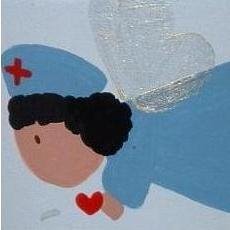Zollinger-Ellison syndrome: Tumors of the pancreas that cause upper GI inflammation. The tumors secrete gastrin causing high levels of stomach acid.
Wilson’s disease: High levels of copper in various tissues throughout the body. (Genetically linked- Autosomal recessive). Kayser-Fleisher Rings in the eye (bluish rings aound the iris)
Pancreatitis: Inflammation of the pancreas
Pancreatic Cancer: cancer of the pancreas. Higher rates in men.
Hepatitis A: Viral infection that causes liver swelling.
Hepatitis B: Sexually transmitted disease, also transmitted with body fluids and some individual may be symptom free but still be carriers.
Hepatitis C: An inflammation of the liver caused by infection with the hepatitis C virus.
Gastritis: can be caused by various sources (bacteria, viruses, bile reflux or autoimmune diseases). Inflammation of the stomach lining.
Ulcers
Peptic Ulcers -ulcer in the duodenum or stomach
Gastric Ulcers - ulcer in the stomach (pain 30 to 60 minutes after a meal)
Duodenum Ulcer -ulcer in the duodenum (pain 30 to 60 minutes after a meal)
Bacteria: Helicobacter pylori- often associated with ulcer formation.
Diverticulitis – abnormal pouch formation that becomes inflamed in the intestinal wall.
Intestinal obstruction: Can a paralytic ileus/false obstruction (children) or a mechanical obstruction:
Carcinoid Syndrome: symptoms caused by carcinoid tumors. Linked to increased secretion of Serotonin.
Hiatal Hernia: Stomach sticks into the chest through the diaphragm. Can cause reflux symptoms.
(GERD) -Gastroesophageal reflux disease, a disorder in which there is recurrent return of stomach contents back up into the esophagus, frequently causing heartburn, a symptom of irritation of the esophagus by stomach acid.
Ulcerative colitis: chronic inflammation of the rectum and large intestine.









